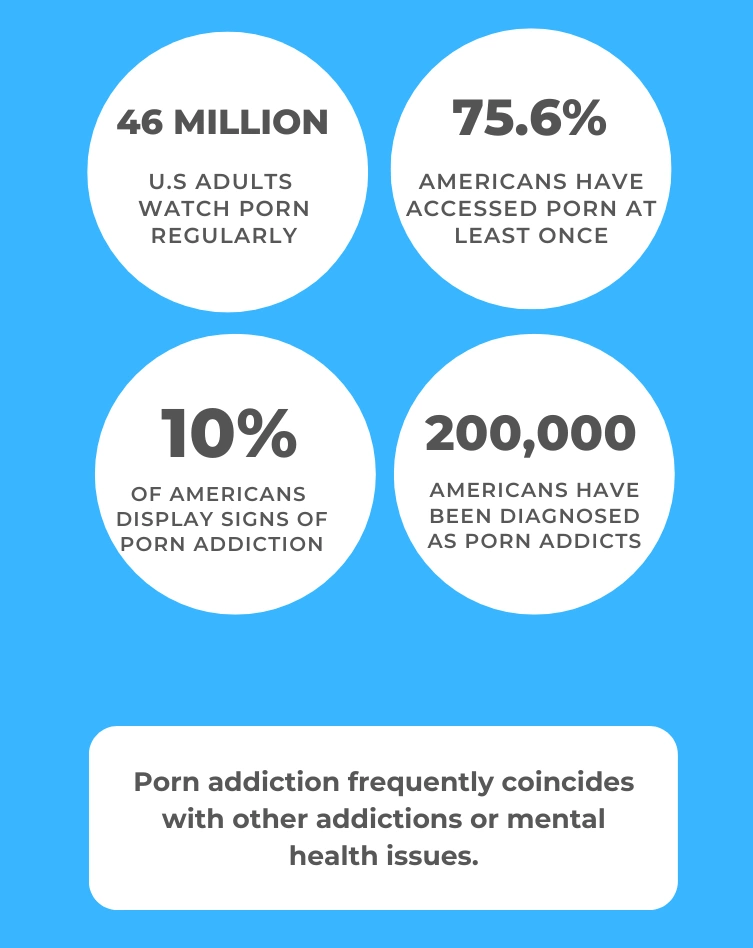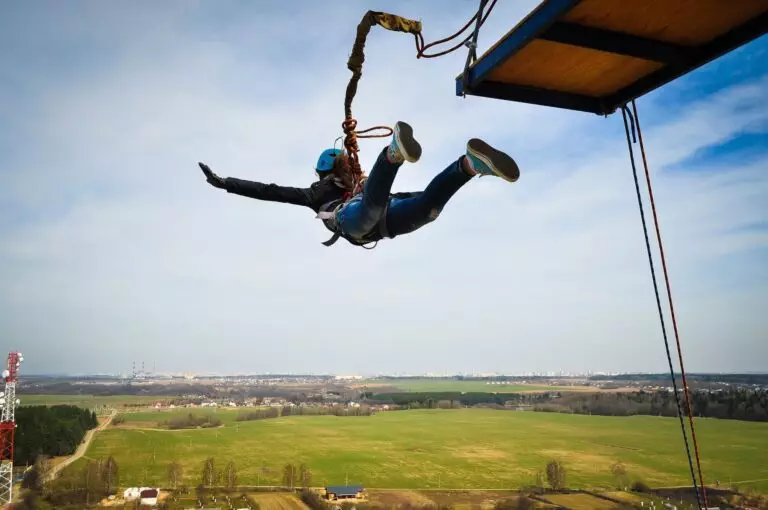Pornography addiction is a complex and often misunderstood issue, impacting people and relationships across the globe. In scientific terms, porn addiction is known as Problematic Pornography Use (PPU).
Unlike addictions where substances or specific behaviors are used, this addiction centers around the compulsive need to consume sexually explicit material. Its effects aren’t just psychological but can extend to emotional and social aspects of life.
The rise in internet accessibility and proliferation of online adult content have made this material more widely available, leading to an increase in addiction cases. Far from a problem unique to the user, it ripples out to affect partners, families, and communities.
Understanding pornography addiction statistics is crucial in recognizing its scale and impact. More than mere figures, this revealing data represents real people facing real struggles.
Maui Recovery has been treating people addicted to internet pornography for many years. After reviewing the latest pornography statistics, we aim to offer insights into the impact of this growing issue, as well as prevention tactics and potential treatments. Our goal is to foster understanding and empathy for those grappling with this addiction.
What is pornography addiction?
Pornography addiction is characterized by the compulsive use of sexually explicit material and can lead to various issues such as sexual dysfunction and mental health issues. Studies have shown significant changes in the brains of compulsive users.
Furthermore, while experts may disagree on whether pornography addiction qualifies as a disorder, it is often considered a subset of “hypersexual disorder.” While no exact diagnosis or specific treatments are officially recognized, this addiction is still a global phenomenon.
Interestingly, addiction to pornography shares similarities with substance abuse. It’s important to understand these aspects to address the issue effectively and provide appropriate support.
Causes
Possible causes of porn addiction may stem from young people’s sexual development and their exploration of sexuality. Additionally, the influence of close relationships and sexual experiences could contribute to its development.
Of course, the accessibility of online pornography is a major cause, without which it wouldn’t be as widespread as it is today.
Experts like Dr. David J. Ley view it as part of a broader societal issue; one comprising cultural and sociological factors that influence not only porn use, but our relationships with sex and each other.
Other notable causes of pornography addiction include:
- Brain chemistry – Elevated dopamine and other brain chemistry changes when a person views porn can contribute to an addiction developing.
- Underlying disorders – Mental health conditions like mood disorders, personality disorders, anxiety, depression, PTSD, OCD, and ADHD often co-occur with porn addiction.
- Hormone imbalances – Regular viewing of pornography can alter brain chemistry, leading to hormonal imbalances and increased dependency.
- Relationship problems – Difficulties in relationships can prompt people to use pornography, potentially leading to addiction over time.
- Lack of sexual satisfaction – This can drive people to rely on porn, leading to compulsive behaviors and addiction.
- Stress relief – Some people use internet pornography as a form of stress relief, but this can lead to dependence on elevated dopamine levels released during viewing.
Pornography statistics
Compulsive pornography use (usually affecting young men, according to research) is a growing concern. This is being gradually revealed by pornography data and literature reviews. The statistics below indicate an escalating issue within the world. These statistics – gathered from a nationally representative sample of the US population – highlight the alarming degree of pornography use and addiction.
*All statistics were taken from a meta-study published in February 2023 by Bedbible.
How many people are addicted to porn?

Key pornography statistics
- Before turning 18, 93.2% of boys encounter porn.
- One in four Americans viewed porn online in the past month.
- 69.3% of men watch porn primarily for sexual excitement.
- 42.3% of women experience involuntary exposure to porn.
- One in three men and one in five women watch porn due to peer pressure.
- Nearly 40% of men and 21% of women use porn to learn about sex.
- 10% of Americans display potential signs of porn addiction.
- 87% of men aged 18–35 are weekly pornography users.
- An estimated 5–8% of adult Americans are addicted to pornography.
- Sex addiction, often leading to excessive porn use, affects about 12 million Americans.
- A strong correlation exists between narcissism and porn consumption.
- Nearly 18% of people who use porn report watching it at their workplace.
Facts about the industry
- The porn industry ranks among the most lucrative globally.
- It generates more revenue than the NFL, NBA, MLB, NBC, CBS, and ABC combined.
- Watching porn in North Korea can result in capital punishment.
- Male actors in gay porn typically earn three times more than in other categories.
- Viewers predominantly focus on the faces of porn stars.
- “Sex” is the fourth most searched term on Google; “porn” is sixth.
- Online searches for “Teen Porn” have tripled over the past eight years.
- The United States leads in producing hardcore pornography.
- One in six people use public Wi-Fi to access porn.
- 57% of Americans consider porn to be morally unacceptable.
Pornography data – women vs men

- 65% of men and 18% of women watch porn at least once per week.
- Men start watching porn at a younger average age (14.3 years) than women (14.8 years).
- Men are four times as likely as women to have watched porn in the last month (44% vs. 11%).
- 42.3% of women have unintentionally come across porn.
- Only 16.8% of women watch porn for sexual excitement.
- Women are more inclined to read pornographic literature or listen to erotica.
- Women frequent porn chat rooms more than men.
- 70% of women who watch porn have not disclosed this to others.
- 20% of men and 13% of women have watched porn at work.
- Women who view porn report enhanced sexual experiences.
Pornography statistics by age
- 93.2% of boys and 62.1% of girls are exposed to porn before age 18.
- 97.4% of boys and 82.7% of girls have seen porn at some point.
- The average age of first exposure is 14.3 years for boys and 14.8 years for girls.
- Significant exposure begins at age 12 for boys and girls, increasing markedly through ages 15 and 16.
How frequently do people watch porn?
- 64% of people report watching explicit content at least once a week.
- 87% of men aged 18–35 view porn weekly.
- 25% of people watch porn every few days.
- 20% of men and 13% of women have watched porn at work.
- 8% of people view explicit material once a month or less.
- 13% of all online searches are related to porn.
While the statistics above are not all related to pornography addiction specifically, they speak volumes about the current state of porn use, and how this relates to the rise of pornography addiction.
The impact of porn addiction
The compulsive engagement with explicit content can significantly alter perceptions of sexuality, affecting emotional well-being and self-image. This behavior often leads to issues in sexual activities and negatively impacts real-life romantic relationships. It’s associated with distorted views of healthy sexual interactions and can contribute to sexual violence.
If you’re struggling with this issue, you may find maintaining healthy relationships challenging, as it can affect your understanding of intimacy and emotional connection.
Recognizing the broader social and emotional consequences of such compulsive behaviors is key to addressing their impact on loved ones, communities, and society at large.
Distorted perception of sexuality
The impact of porn extends beyond statistics, shaping perceptions and attitudes toward sexuality. Studies show that such exposure can lead to desensitization, especially towards sexually violent content, and may result in less empathy towards victims. It can also influence attitudes toward gender relationships, potentially leading to distorted views about non-mainstream sexual behaviors.
This study found men who frequently watch porn experienced a decrease in the quality of their sex lives. Viewers of sexual content may develop more permissive attitudes towards premarital sex and may underestimate the stability and happiness of marriages. Such shifts in perception highlight the need for awareness and education about the potential impacts of explicit material.
Emotional health and self-image

Far from just a means to satisfy an urge, excessive porn use can negatively impact emotional and mental health, as well as self-image, leading to a distorted perception of sexuality. If you suffer from a porn addiction, you may be familiar with the shame, guilt, and low self-esteem caused by the compulsive behavior.
Moreover, those with a co-occurring substance use disorder (SUD) or sexual addiction (of which pornography addiction is a subset) have reported higher rates of depressive symptoms and anxiety. The evidence is clear: the addictive nature of porn can lead to severe emotional repercussions.
Effects on relationships
Excessive use of pornography can lead to intimacy issues within relationships, causing a lack of sexual satisfaction and creating unrealistic expectations. This behavior might contribute to decreased sexual activity in real-life relationships, potentially leading to infidelity and trust issues.
If you’re dealing with this addiction, it’s important to recognize its potential strain and damage to the dynamics of your intimate relationships. While regularly watching porn may be normalized, its effects shouldn’t be underestimated. They can have lasting consequences on the quality and stability of your interpersonal connections.
The neuroscience behind porn addiction
Research indicates that excessive pornography use significantly affects the brain, mirroring the patterns seen in substance addiction. This is largely attributed to alterations in the brain’s reward system. The release of dopamine in response to sexual stimulation and novelty plays a crucial role. This is intensified by the Coolidge Effect (an evolutionary mechanism that increases dopamine production with new sexual stimuli) a characteristic exploited by the diverse content in online pornography.
Further studies are emerging that support the addiction model, with brain responses to compulsive porn use showing similarities to drug addiction.
Neurobiological evidence supporting addiction model
Literature reviews have revealed significant neurobiological changes in those who frequently engage with explicit sexual content. There is now compelling evidence that this compulsive behavior is linked to observable changes in brain activity, particularly in regions associated with pleasure.
The neurobiological parallels between this behavior and substance abuse are striking, emphasizing the far-reaching, real-world implications. Such insights emphasize the importance of developing effective interventions and treatment strategies.
The role of the internet in porn addiction
In the last 20 years, explicit content has become increasingly accessible. The easy accessibility of pornographic material online can lead to compulsive use and alter sexual development in young adults. Moreover, it can contribute to sexual dysfunction, impacting their relationships and behaviors.
The lucrative nature of the porn industry, along with the lack of regulation, has contributed to the widespread availability and consumption of explicit material. Protecting profits at all costs, the industry employs tactics resembling those used by the tobacco industry.
Ease of access

The convenience of online pornography can fuel chronic consumption, especially among the youth. Access has dramatically increased due to several factors, including the widespread availability of the internet, improved device processing power, enhanced Wi-Fi and data roaming capabilities, and the increased production and distribution of such content.
Today, this type of content is diverse and available in various forms such as videos, images, games, live streams, and written material. The prevalence and ease of accessing these materials raise concerns, particularly regarding their impact on young people’s development and behavior.
The lucrative nature of the industry
The pornography industry strategically reels in those with addictive behavior, resulting in monetary gain for the providers, and mainly negative outcomes for those targeted. The industry’s morally questionable tactics have led to a growing porn addiction epidemic.
What’s more, its substantial profits allow it to use an array of marketing tactics. These cunningly manipulate and enable those struggling with online pornography addiction, perpetuating the cycle.
Seeking help: Treatment options for porn addiction
If you’re facing these challenges, there are various support options available. While specific research on this type of addiction may be ongoing, existing treatments used for other addictions are likely to be effective.
Cognitive Behavioral Therapy (CBT)
CBT identifies and helps you change the thought patterns that lead to compulsive behavior. For instance, it can address beliefs and attitudes about sex and relationships fueled by pornography use, teaching healthier ways of thinking and behaving. This case study showed that CBT was successful in helping a client overcome a porn addiction.
Dialectical Behavior Therapy (DBT)
DBT is particularly useful in managing the intense emotions and stress that can drive addictive behavior, and research has shown it to be an effective treatment for porn addiction. Through skills like mindfulness, distress tolerance, and emotion regulation, people can learn to cope with uncomfortable feelings without resorting to pornography use.
Self-help groups
By creating a safe, non-judgmental space, self-help groups allow you to share your experiences and struggles. The collective wisdom and empathy found in these groups often empower members to understand and manage their addictive behaviors more effectively. The peer-led structure of self-help groups encourages accountability and offers practical strategies for overcoming addiction.
Motivational Interviewing
Motivational interviewing can help you resolve your ambivalence about changing unhealthy behaviors. It can be particularly effective if you’re unsure about whether you want to reduce or stop pornography use, helping you find internal motivation for change.
Equine Therapy
By fostering non-verbal communication skills, empathy, and emotional regulation, interacting with horses facilitates presence and mindfulness – a powerful means of breaking patterns of compulsive pornography use.
Nature Immersion
Being in nature can have a calming effect on the mind and body. If you’re struggling with pornography addiction, nature immersion can provide a sense of peace and grounding, helping you to disconnect from triggers and stressful environments.
Adventure Therapy and Surf Therapy

These therapies offer physical engagement and challenge, which can build self-esteem and a sense of accomplishment. They can provide a healthy outlet for energy and emotions, which might otherwise be channeled into addictive behaviors.
Each of these treatments can play a crucial role in the holistic treatment of pornography addiction. They address not just the behavior itself, but also the emotional, psychological, and physical aspects that may be contributing to the addiction.
Is there a way to prevent early exposure to pornography?
Preventing early exposure to pornography involves several key strategies. Firstly, it’s important to teach healthy sexual development. This can be done through open discussions about sexual health, which not only educates but also serves as a preventive measure against disorders like sex and porn addiction.
These discussions should include the real-world implications of pornography use, especially among those prone to substance addiction.
Highlighting the detrimental effects of pornography is also essential – educating young people about how pornography can negatively impact their perceptions and experiences. Moreover, emphasizing the positive aspects of intimate relationships can play a significant role in preventing pornography addiction.
Finally, preventing early exposure to pornography can be achieved by implementing age-appropriate sex education, raising awareness about the harmful effects of pornography, enforcing internet safety measures, discussing the importance of consent and sexual violence, and promoting healthy sexual behaviors. These comprehensive measures can effectively help in deterring early exposure to pornography.
How Maui Recovery can help
That brings our article on pornography addiction statistics to a close. As you can see, understanding its myriad effects is crucial, but equally important is knowing where to turn for help.
Maui Recovery is dedicated to supporting your journey towards long-term recovery, providing the resilience and tools necessary to maintain a healthy, more fulfilling life.
Our comprehensive program blends experiential therapies with evidence-based methods, crafting a personalized recovery plan that resonates with your unique needs. If you’re seeking further guidance on managing recovery or if you’re curious about our holistic approach, we encourage you to get in touch with us.
At Maui Recovery, we’re fully committed to your ongoing growth and recovery success. We aim to help you find true fulfillment and peace.
Reach out to us today to discover how we can support you on this transformative journey.









